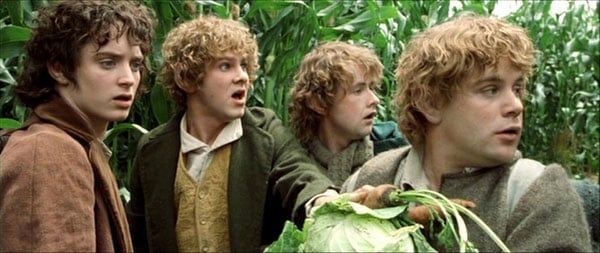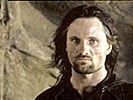Eye For Film >> Movies >> The Lord Of The Rings: The Fellowship Of The Ring (2001) Film Review
The Lord Of The Rings: The Fellowship Of The Ring
Reviewed by: Jennie Kermode

The first time I saw this movie, to be honest, I was underwhelmed - though I liked it very much, it was by no means the masterpiece which I had been encouraged to expect, and I felt it lacked the energy and the confident style of much of Peter Jackson's early work.
The second time, however, free to concentrate more on the details and the subplots, and I liked it much more. Whilst it contains some truly awful dialogue and an annoyingly charisma-free performance from Liv Tyler, who makes Arwen seem quite extraneous, it also has its moments of genius, with intricately created sets and superb handling of a cast of characters so large as to give anyone difficulties getting to know them over the course of a two and a half hour film.

What gave the film its greatest strength was its cast, in particular Elijah Wood, who gave a remarkable pivotal performance as the hobbit Frodo. In a difficult understated role, he managed to win audience sympathy whilst portraying the transformation of a youthful, happy-go-lucky character into something gradually, irredeemably darker.
McKellen was perfect as Gandalf, making him much more dynamic and vigourous than I had previously imagined. Orlando Bloom brought a surprising amount of personality to the much reduced role of Legolas. Viggo Mortenson was suitably charismatic as Aragorn, and Sean Bean did well to develop the role of Boromir sufficiently, in very little screen time, to make his fall and his eventual ending emotionally resonant. As Saruman, though the character itself was robbed of much of its original complexity, Christopher Lee seemed to have come home to the thing he does best.
The other really impressive aspect of this film was its action sequences. The attention to detail was superb, especially considering that it would have been easy to satisfy an audience with far less. Not only was the initial battle sequence as impressive in scope as any hype had suggested, but the smaller scenes and the choreography were brilliantly co-ordinated. Characters who didn't get very much to say were able to make their personalities known through their actions. It was particularly pleasing to see Legolas played by somebody who could use a bow properly, and, for that matter, to see anyone fighting dynamically with a bow instead of just hiding at the back. The vulnerability of the inexperienced hobbits in violent situations was also convincingly portrayed.
Many of my friends, and professional critics likewise, are swooning over the cinematography and gorgeous New Zealand landscapes which lent this film much of its mythic quality. So sure, it's pretty, but does it have substance? To my mind, the most striking thing about the camerawork was the integration of very simple and very complex special effects, so that there was scarcely a moment when the characters were not believably different sizes. It's these details which are often the hardest thing to get right, and they are of vital importance in making the whole thing believable.
Despite the sections of plot which were cut out of this story, a necessary thing considering its length, it hung together remarkably well. The use of languages was well handled, especially in the background music. There were a few slips, like Gimli's awful line during the escape from Moria, but generally a good balance was maintained between warm humour and that chilling sense of impending doom relating to the eponymous ring. Personally, I didn't find the cave troll or the Balrog particularly scary, but I thought they worked well. The Nazghul were suitably vicious and creepy. The hobbits were charming and sympathetic without being too cute. On another note, the film had plenty of less intentional humour, and amazing slash potential. And there was a merciful lack of singing. For anyone to deprive themselves of this cinematic experience would be a real shame.
Reviewed on: 27 Jun 2007



















